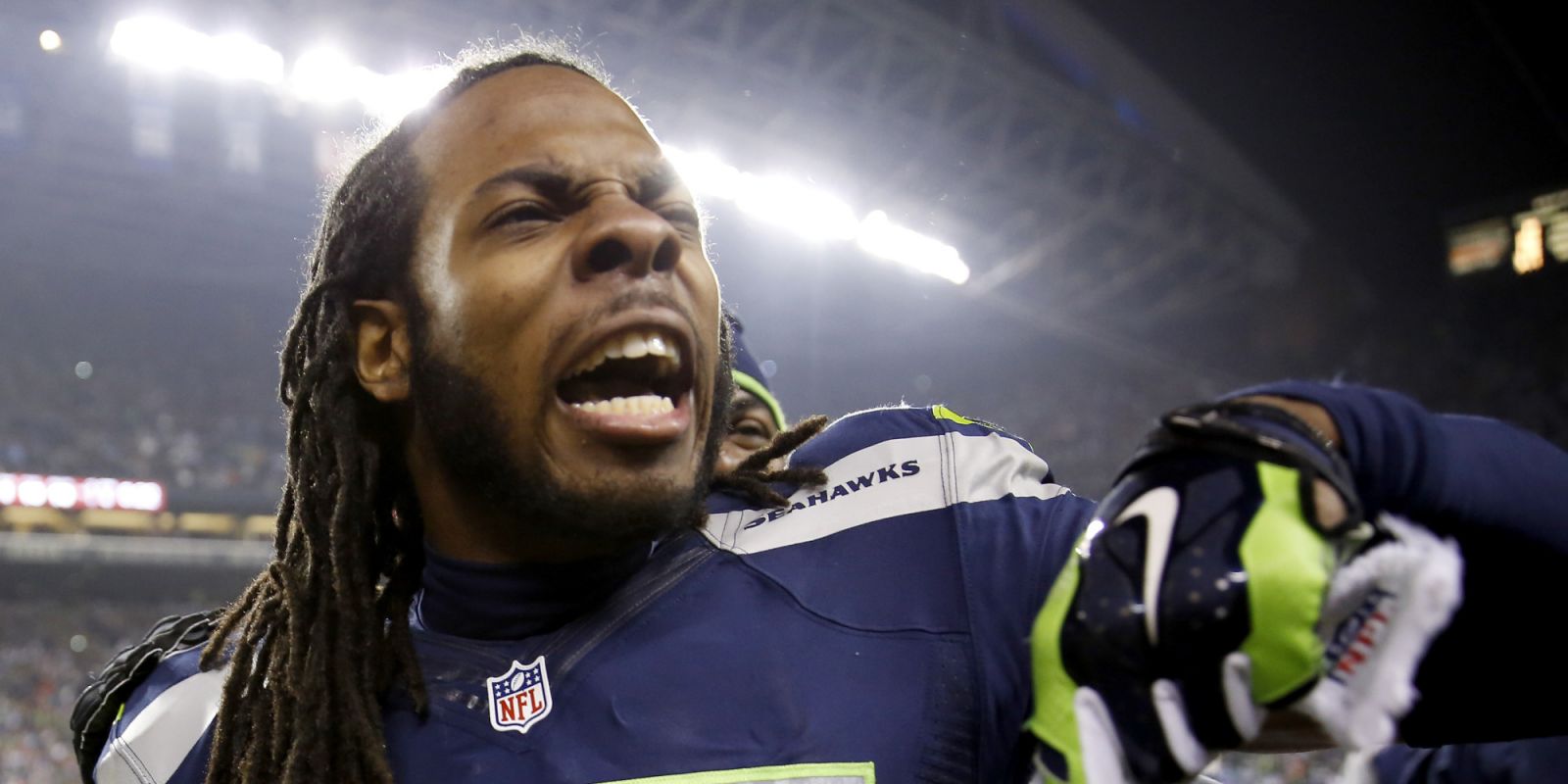Mild-mannered, coffee sipping, regularly rained upon, technically inclined folk. For many, this is the stereotype of the Seattle citizen. In recent history, the professional athletes of Seattle have kept a low profile off the field (think Edgar Martinez, Ichiro, Matt Hasselbeck, just from the 2000s). With that in mind, Richard Sherman is something new and different to the city. In contrast to the calm, non-confrontational image of the Seattleite, Sherman is brilliant on and off the field but mixes it with a brash and confrontational nature on the field. It is different and Seattle should embrace it.
Indeed, the polarizing figure that is Sherman certainly seems to be gaining popularity with the announcement that Sherman has cracked the top 10 in jersey sales. If it holds through the Super Bowl (and there is no reason to suspect otherwise), he will be the only defensive player in the Top 10 and the first Seahawk to crack that list since they started keeping the stat in 2001. Full disclosure, I own and proudly sport a #25 Sherman jersey and I got mine before the Post-Game Interview Heard Round the World. If I had a hipster side, I’d be frustrated that MY jersey has now gone mainstream. But that is besides the point.
I wear my jersey proudly because I embrace Richard Sherman and what he’s brought to the Seattle Seahawks on the field. But I embrace everything that I’ve seen about Sherman. My problem with the current controversy is that, like so many, it has become overly simplified. There are two narratives that dominate the Sherman News Cycle right now: a Compton kid turned 3.9 Stanford student and the best corner in the NFL who backs up his trash talk and a classless thug who puts a shadow on the team.
The truth, I feel, as always, lies somewhere between the two extremes. Sherman probably went too far, mostly with what he did on the field (choking sign most particularly). I have no problems with the post-game interview but can understand why some would find that behavior off-putting. However, on both sides, the portrayal seems one-dimensional. He seems to either be an amazing hero or a terrible villain. Let’s add some depth to the portrayal.
First off, let’s look directly at the Michael Crabtree confrontation before the infamous interview. Since the incident went public, Sherman has maintained that he was simply coming up to say good game to the receiver. Many have doubted that. However, Sherman was wearing a microphone and the exchange went exactly as Sherman said. He came up to Crabtree, patted him on the backside and said, twice, “hell of a game” and extended for a handshake. Crabtree responded by shoving him in the face. If I were in that situation, I might be inspired to talk a little post-game trash as well.
A trash talker may not want to outwardly respect his opponents but Sherman has, on occasion, shown great respect for those who plays against. Take one of the all-time greats: Tony Gonzalez. This year, after the Hawks played the Atlanta Falcons, Sherman and Gonzalez agreed to swap jerseys. Knowing this could be the last time the two face off on the field, it was a sign of respect many wouldn’t attribute to the brash Sherman. And he backed up the gesture with kind public words:
“He’s a Hall of Famer and been a great player in this league for a long time. You always respect great players. You respect the game in that sense. It’s an honor to play against him.”
Next, we can also look at the gruesome Navarro Bowman injury. As soon as it happened, Sherman says he dropped to a knee and prayed for the opponent. While NFL players certainly can’t dwell on the threat of injury, it has to linger in some part of the back of the mind of all players. It may not seem like a lot but would not a “classless thug” revel in the injury of his opponent. However, this story comes straight from the mouth of Sherman. Perhaps a great example of the different dimensions of Richard Sherman on the field is the Divisional Round last year against Washington when Sherman wore a mike for the game.
You hear it all. Sherman is definitely a trash talker, caught on tape continually giving the business to Pierre Garcon of Washington and repeatedly telling him to “get his weak **** off the field.” Of course, there is the infamous post-game punch. Sherman may not have directly instigated his way into getting hit but he certainly didn’t dissuade the hit.
However, lost in the glare of all this punch is the embrace and conversation with Robert Griffin III after the game. The two hugged and the discussion caught on Sherman’s microphone is revealing. Sherman and RGIII talk about how proud they are of the other and Sherman compliments Griffin on a “hell of a year” and wishes him well on getting his freshly re-injured knee healthy. This is not the talk of a thug.
If you want to criticize Richard Sherman, feel free. He is polarizing for a reason; there is certainly something to criticize. However, one dimensional portrayals, complimentary or not, never tell the full story.
Add The Sports Daily to your Google News Feed!
